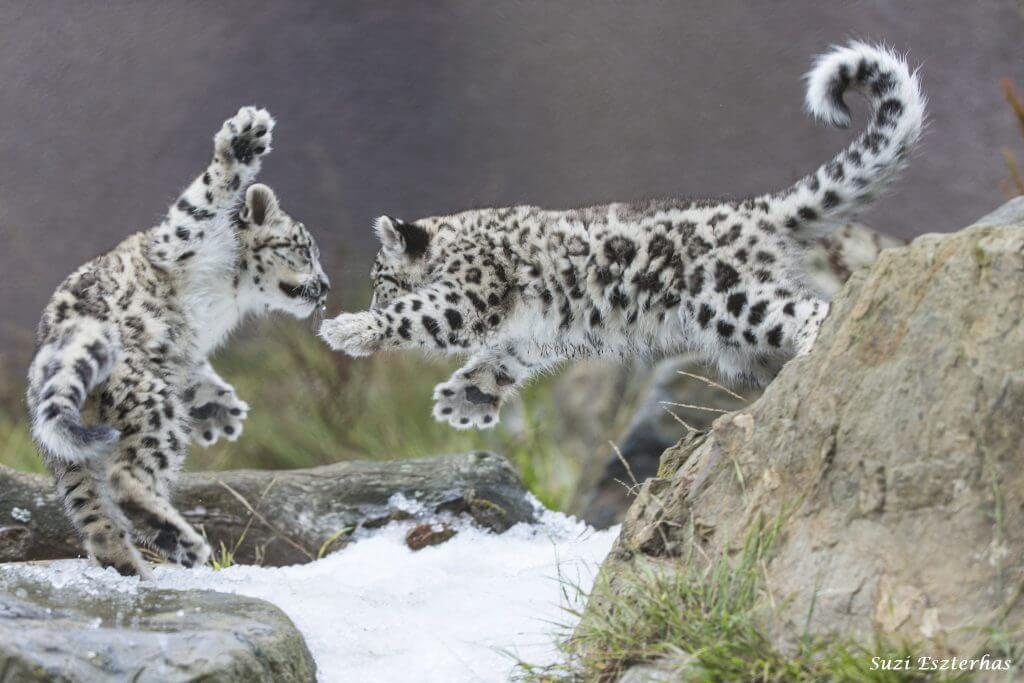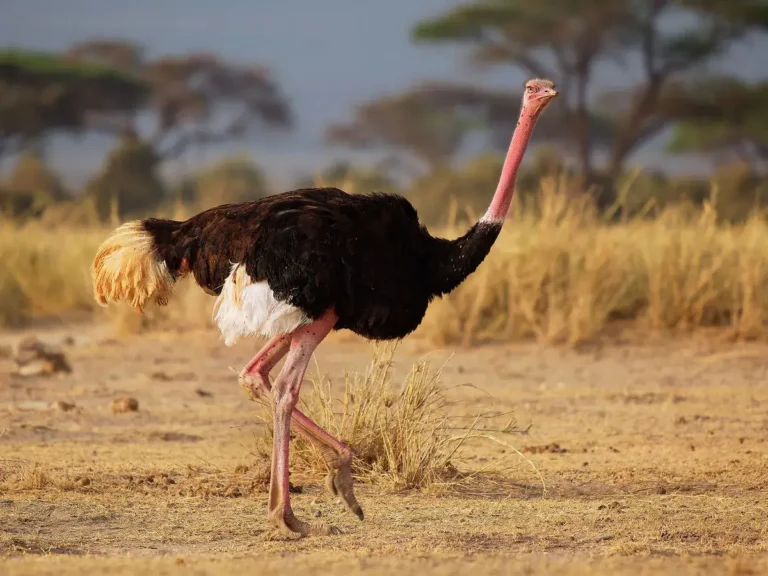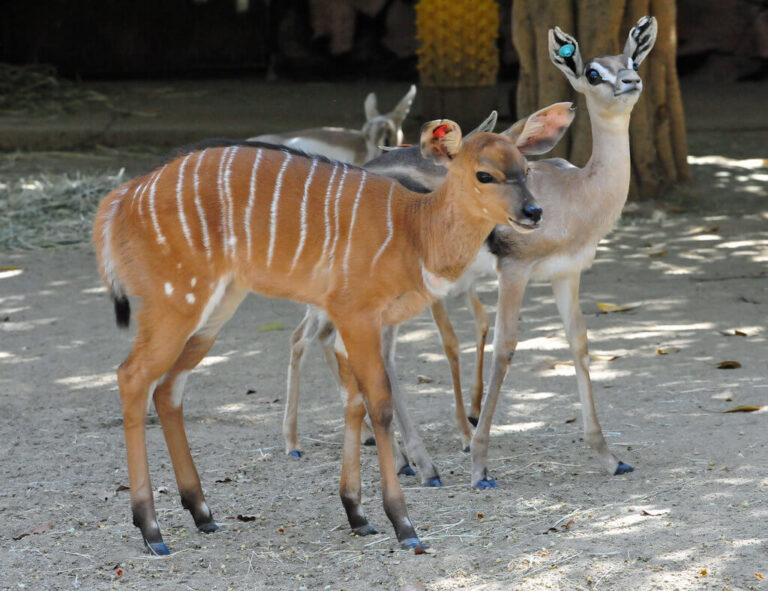Snow Leopard: The Ghost of the Mountains
The snow leopard, known as the “Ghost of the Mountains,” is one of the world’s most elusive and majestic big cats. This stunning predator roams the high altitudes of Central Asia, perfectly adapted to its harsh environment. This comprehensive article explore the snow leopard’s scientific classification, physical characteristics, habitat, behavior, diet, reproduction, predators, conservation status, interesting facts, evolutionary history, and its relationship with humans.
Contents
Scientific Classification
- Common Name: Snow Leopard
- Scientific Name: Panthera uncia
- Family: Felidae
- Order: Carnivora
- Class: Mammalia
- Phylum: Chordata
Physical Characteristics

The snow leopard is uniquely adapted to its cold, mountainous environment:
- Size: Snow leopards typically measure 39 to 51 inches in body length, with a tail that adds 31 to 39 inches.
- Weight: They weigh between 60 and 120 pounds, with males slightly larger than females.
- Fur: Their thick, smoky-gray fur is covered with black rosettes and spots, providing excellent camouflage against rocky terrain.
- Tail: Long and bushy, the tail helps balance on rugged terrain and acts as a blanket to cover their faces during harsh weather.
- Paws: Their large, fur-covered paws act like natural snowshoes, distributing their weight evenly as they walk across snow and ice.
- Eyes: Snow leopards have pale green or gray eyes, highly adapted for low-light hunting at dawn and dusk.
Habitat
Snow leopards inhabit the rugged mountain ranges of Central and South Asia, including the Himalayas, Altai, and Tien Shan mountains. Their preferred altitude ranges from 9,800 to 17,000 feet, where they navigate steep, rocky terrain and snow-covered landscapes. They thrive in areas with sparse vegetation, broken cliffs, and rocky outcrops, which offer ideal cover for stalking prey.
Behavior

Snow leopards are solitary and elusive animals known for their excellent climbing skills and incredible agility:
- Activity: They are crepuscular, meaning they are most active at dawn and dusk.
- Territoriality: Each snow leopard has a large home range, spanning up to 80 square miles, though ranges often overlap.
- Communication: They use scent marks, scratches, and vocalizations, including a distinct chuffing sound, to communicate.
- Stealth: Snow leopards are highly secretive and blend perfectly into their environment, earning them the nickname “Ghost of the Mountains.”
Diet
Snow leopards are carnivorous predators with a diet mainly consisting of:
- Prey: Their primary prey includes blue sheep (bharal), ibex, Himalayan tahr, and argali sheep. They also hunt smaller animals like hares, marmots, and birds.
- Hunting Technique: They rely on stealth and surprise, often stalking their prey for hours before pouncing. Snow leopards can leap as far as 50 feet in a single bound to capture prey.
- Scavenging: Although they prefer fresh kills, they will scavenge when necessary, feeding on carrion left by other predators.
Reproduction
Snow leopards have a specific breeding season and exhibit unique reproductive behaviors:
- Mating Season: Mating occurs between January and March, with females vocalizing to attract males.
- Gestation: The gestation period lasts about 90 to 100 days.
- Offspring: Females give birth to 1 to 5 cubs, typically in a well-hidden den lined with their fur. Cubs are born blind and helpless, weighing around 1 pound.
- Parental Care: The mother raises the cubs alone, providing food and protection. Cubs stay with their mother for 18 to 22 months before becoming independent.
Predators and Threats
Adult snow leopards have no natural predators due to their top position in the food chain. However, cubs can prey on larger carnivores like wolves and eagles. The greatest threat to snow leopards is human activity:
- Poaching: Snow leopards are hunted for their beautiful fur and bones, used in traditional medicine.
- Habitat Loss: Expanding human settlements, mining, and infrastructure projects disrupt their habitat.
- Retaliatory Killings: When snow leopards prey on livestock, herders often kill them in retaliation.
Conservation Status
The snow leopard is currently classified as “Vulnerable” on the IUCN Red List, with an estimated population of 4,000 to 6,500 individuals remaining in the wild. Conservation efforts focus on anti-poaching initiatives, habitat protection, and community-based conservation programs that promote coexistence between humans and snow leopards.
Interesting Facts
- Camouflage Mastery: The snow leopard’s fur provides warmth and exceptional camouflage against the rocky, snowy terrain.
- Adaptations for High Altitudes: Their large nasal cavities help warm the cold air they breathe, and their thick fur covers every part of their body, including their undersides and paws.
- Silent Roar: Unlike other big cats, snow leopards cannot roar due to the underdevelopment of their larynx.
Evolutionary History
Snow leopards diverged from other big cats around 3.9 million years ago. They share a common ancestor with tigers, explaining their morphology and behavior similarities. Their adaptations are fine-tuned for survival in some of the most extreme conditions on Earth, a testament to their evolutionary resilience.
Relationship with Humans
Snow leopards are integral to the cultures and mythologies of the regions they inhabit. In many local traditions, they are seen as symbols of strength and agility. Conservation groups work closely with local communities to reduce conflicts and educate people about preserving this magnificent species.
Conclusion
The snow leopard, with its mystical beauty and incredible adaptations, plays a vital role in the mountain ecosystems it inhabits. Despite facing numerous threats, ongoing conservation efforts provide hope for the future of this elusive big cat. By understanding and protecting snow leopards, we safeguard the fragile mountain environments they call home.
- Are Rottweilers Good With Kids? Reasons & Training Tips - 17 September 2025
- How Long Are Dogs Pregnant: Complete Guide - 16 September 2025
- German Shepherd Doberman Mix: Info, Pictures, Care & More - 11 September 2025







